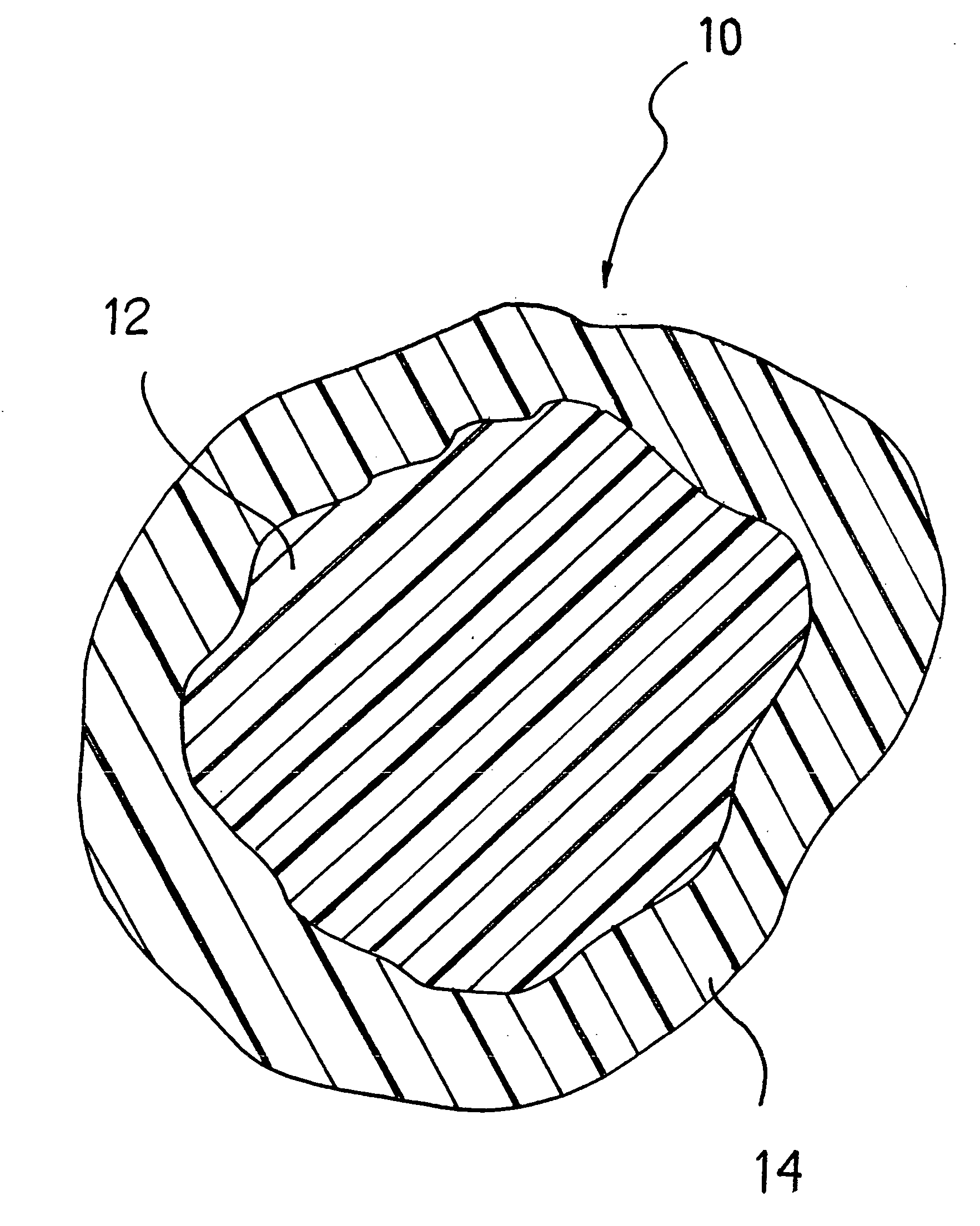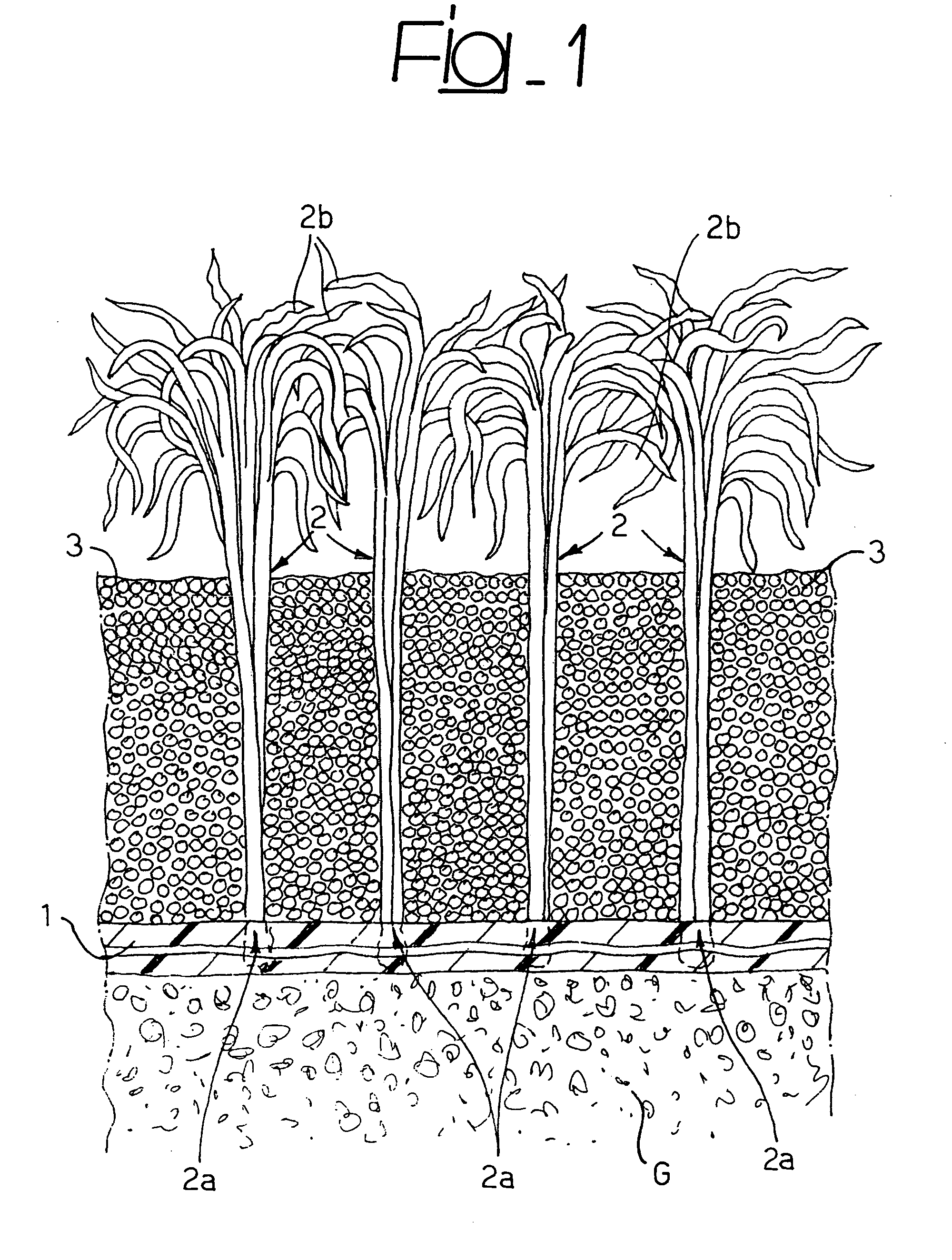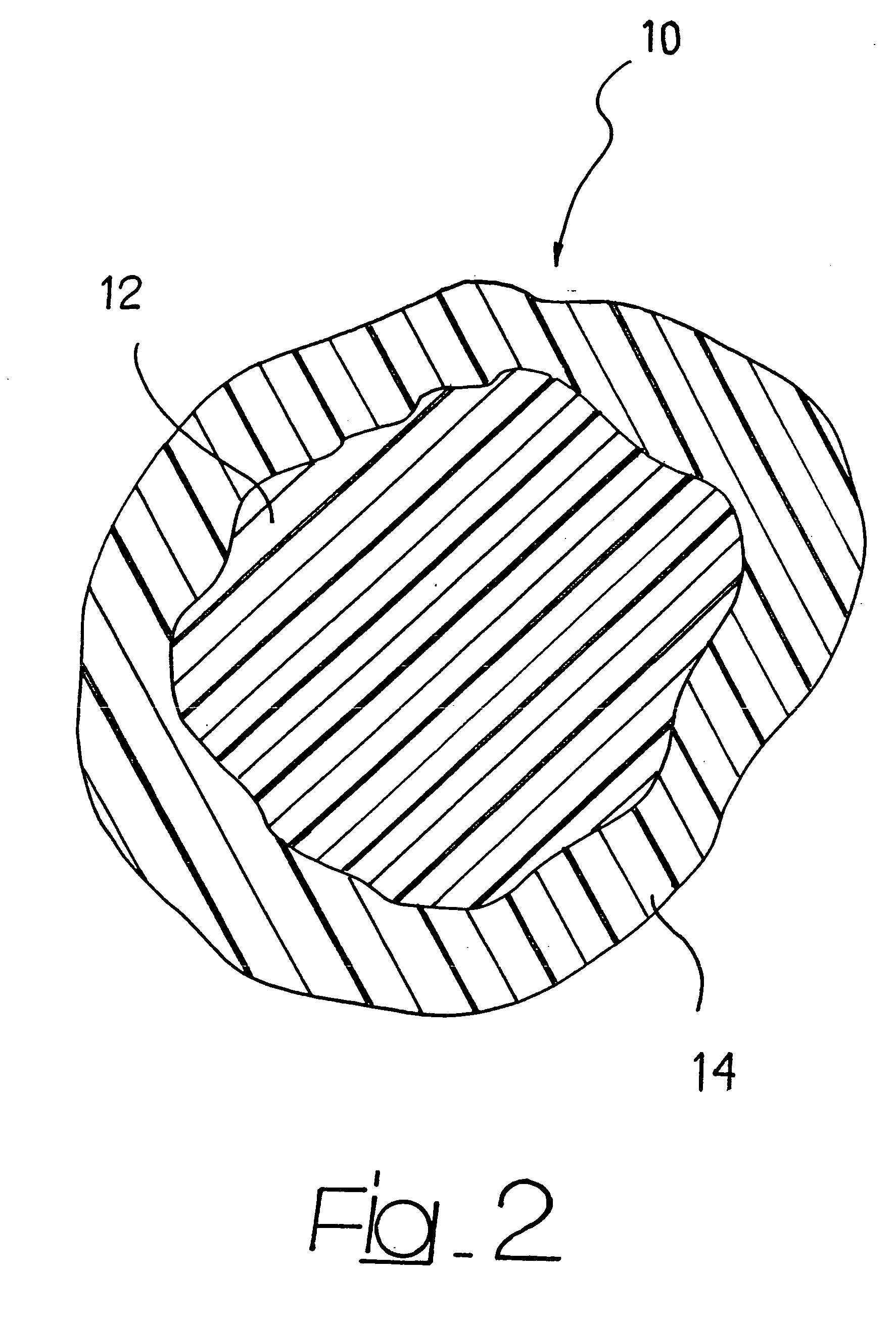Infill material for synthetic-grass structures, corresponding synthetic-grass structure and process of preparation
- Summary
- Abstract
- Description
- Claims
- Application Information
AI Technical Summary
Benefits of technology
Problems solved by technology
Method used
Image
Examples
Embodiment Construction
[0033]FIG. 1 illustrates a structure of a synthetic-grass cover, which comprises a sheet substrate 1 designed to be laid on a subfloor G consisting, in the most typical conditions of use, of a subfloor of tamped earth or a bituminous mat on which the synthetic-grass structure is laid usually in conditions of free laying.
[0034] The sheet substrate may be formed by a sheet made of plastic material such as, for example, a non-woven rubberized fabric with the application, for example, of latexes such as for example SBR or polyurethane latexes. There may advantageously be associated to the substrate in question, on the side that is designed to face the subfloor G, a layer of foamed, for example polyurethane-based, material.
[0035] Starting from the substrate 1 there extend upwards a plurality of filiform formations 2 usually ordered in tufts so as to simulate better the blades of grass of natural turf.
[0036] The filiform formations 2 are anchored to the substrate 1 at their proximal en...
PUM
| Property | Measurement | Unit |
|---|---|---|
| Length | aaaaa | aaaaa |
| Length | aaaaa | aaaaa |
| Fraction | aaaaa | aaaaa |
Abstract
Description
Claims
Application Information
 Login to View More
Login to View More - R&D
- Intellectual Property
- Life Sciences
- Materials
- Tech Scout
- Unparalleled Data Quality
- Higher Quality Content
- 60% Fewer Hallucinations
Browse by: Latest US Patents, China's latest patents, Technical Efficacy Thesaurus, Application Domain, Technology Topic, Popular Technical Reports.
© 2025 PatSnap. All rights reserved.Legal|Privacy policy|Modern Slavery Act Transparency Statement|Sitemap|About US| Contact US: help@patsnap.com



